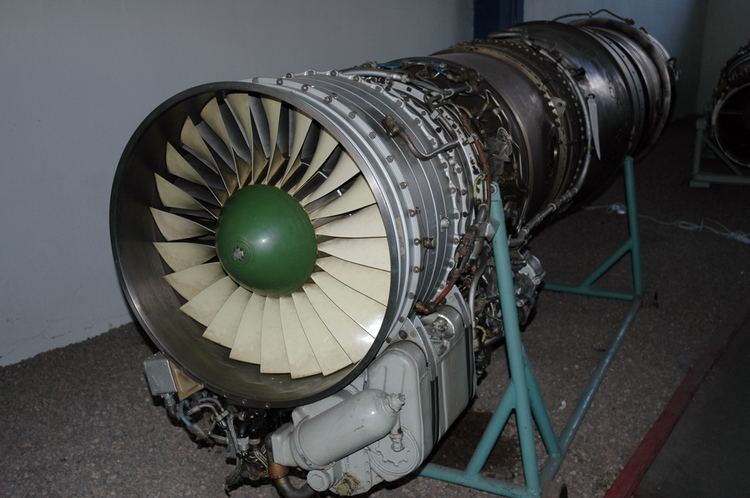The Tumansky R-11 (initially AM-11) is a turbojet engine.
Design and development
The Tumansky R-11 was developed by A.A. Mikulin, S.K. Tumansky, and B.S. Stechkin as a twin-spool axial-flow high-altitude non-afterburning turbojet for Yakovlev Yak-25RV reconnaissance aircraft. This engine was the first Soviet twin-spool turbojet. It was first run in early 1956. The basic design was very successful and it was evolved into Tumansky R-13 and Tumansky R-25. Also experimental Tumansky R-21 was an evolution of R-11. A total of 20,900 R-11 engines were built.
R-11V-300 - first production version, high-altitude, non-afterburningR-11F-300 (R-37F) - afterburning version, entered production in 1956, used on MiG-21F, P and U.R-11AF-300 - improved version for Yakovlev Yak-28B, L and U.R-11F2-300 - new compressor, afterburner and nozzle, used on MiG-21P, PF and FL.R-11AF2-300 - R-11F2-300 adapted for Yakovlev Yak-28I, R and P.R-11F2S-300 - upgraded version for MiG-21PFM, PFS, S, U and UM, and for Sukhoi Su-15, UT and UM.Shenyang WP-7, Chinese license built copies of the R-11Type: Afterburning turbojetLength: 4,600 mm (181.1 in)Diameter: 906 mm (35.7 in)Dry weight: 1,124 kg (2,477 lb)Compressor: Axial compressor, 3-stage LP, 3-stage HPMaximum thrust:
38.7 kN (8,708 lbf) military power60.6 kN (13,635 lbf) with afterburnerOverall pressure ratio: 8.9:1Turbine inlet temperature: 955 °C (1,750 °F)Specific fuel consumption:
97 kg/(h·kN) (0.95 lb/(h·lbf)) at idle242 kg/(h·kN) (2.37 lb/(h·lbf)) with afterburnerThrust-to-weight ratio: 53.9 N/kg (5.5:1)
